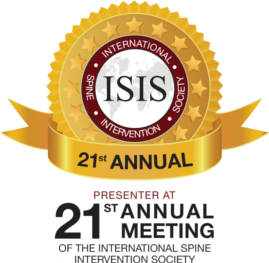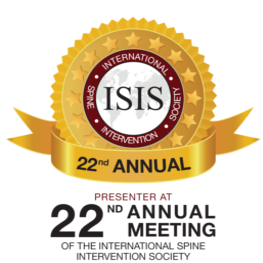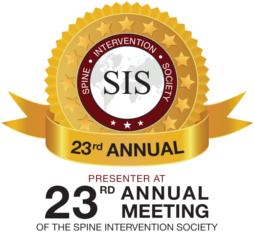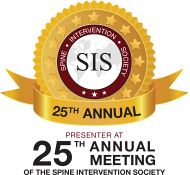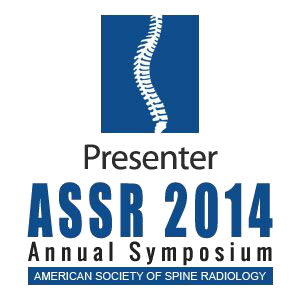Sciatica refers to the pain originating in your lower back and generally radiating down both or one of your legs. It arises when the sciatic nerves become pinched or compressed in the lower back as they exit the spine. The medical term for sciatica is lumbar radiculopathy. Surgery is among the treatment options for lumbar radiculopathy, but it is not always the go-to option. Before opting for it, you first need to understand the facts about sciatica treatment, which we are glad to provide in this blog.
Treating Sciatica
Treating sciatica involves attempting to alleviate pain and enhance mobility. If the condition is not severe, treatment can include activities you can perform yourself. Treatment options are available if the sciatica is more serious or does not improve. Surgery may be one of them.
Surgery may be the most effective choice if your sciatica is more serious. However, doctors usually do not recommend it unless your symptoms indicate nerve damage is imminent or is happening. They might also recommend undergoing surgery if you feel severe pain that hinders you from working or doing your usual routine. Alternatively, your doctor may recommend surgery if your symptoms do not improve within 6–8 weeks of undergoing non-invasive treatment. That said, doctors recommend surgery as a last resort.
Non-Surgical Treatments for Sciatica
Non-surgical treatments for sciatica involve self-treatment and conservative treatment. If your sciatica case is milder and based on its cause, the symptoms will typically improve with self-treatment. Self-treatment includes:
-
Activity and stretching. Learning proper stretches from a qualified instructor experienced in lower back pain can help you significantly. The instructor might effectively assist you in working your way up to other aerobic, core muscle strengthening, and other general strengthening exercises.
-
Over-the-counter drugs. NSAIDs (nonsteroidal anti-inflammatory drugs) are often the initial choice. These drugs reduce swelling, inflammation, and pain.
-
Ice. Ice or cold packs may help reduce swelling and pain in the first few days after sciatica-related pain begins. You could utilize a bag of frozen vegetables or an ice pack to achieve this. Apply cold for twenty minutes at intervals, many times daily.
-
Heat. After using ice or cold for several days, change to a warm compress or heating pad. Apply either of the two for twenty minutes at intervals. If you still feel pain, alternate between cold and hot packs, whichever relieves the pain best.
You can consult a doctor if self-treatment does not produce results after some weeks. Note that moderate to severe pain, tingling, muscle weakness, or numbness are all signs that necessitate professional medical attention. Do not self-treat them.
Conservative Treatment Options
Conservative treatment options are a move up from treating yourself. Your doctor can recommend these options and offer them if self-treatment is not beneficial or your symptoms have become so severe as to necessitate more involved treatment. Conservative treatments involve similar solutions to self-treatment. However, your doctor will be guiding you. The treatment options could also entail the following:
Physiotherapy
Physiotherapy aims to develop exercises that alleviate sciatica by taking pressure off the nerve. Examples include low-impact movements like stretching exercises and swimming, water aerobics, or walking. Physiotherapy can achieve the following:
Increase Hamstring and Hip Flexibility
Stiff hips, glutes, and hamstrings can increase the stress on your lower back and change your posture. This might result in sciatica. Most forms of sciatica can benefit greatly from stretching routines that target the hamstrings and hips and relieve an inflamed or overused piriformis muscle.
The piriformis refers to a tiny muscle attaching at the base of the spine and running just over the sciatic nerve. Extended sitting or inactivity compresses this muscle above the sciatic nerve, resulting in pain and aggravation. You can reverse the impacts of tight hamstrings and hips by doing simple stretching exercises or including yoga in your general fitness regimen.
Improve Back and Core Strength
The musculature in your abdomen or spine may be overly tight or weak, making it impossible to support the body as required. Compromised muscles and poor posture can affect spine alignment, increasing sciatica and lower back pain risk. Mild strengthening exercises targeting your back and core will enhance your posture and capability to respond to stress, lowering the severity and risk of back pain. While recovering from sciatica, avoid high-impact exercises like plyometrics and running.
Prescription Medications
Physiotherapy is usually the first treatment option for sciatica pain. However, if the symptoms do not improve, your physician may prescribe drugs for you. The most prevalent types of prescription medications for sciatica-related pain include the following:
-
Muscle relaxants
-
Anti-inflammatory medications
-
Epidural steroid injections
-
Narcotics
-
Antiseizure medications
-
Tricyclic antidepressants
As the name suggests, muscle relaxants relax the tightened muscles resulting from sciatica. Narcotics assist in easing sciatica-related pain.
Epidural spinal injections also provide pain relief. However, the relief is usually short-term (generally a maximum of three months). Usually, these injections incorporate local anesthesia; thus, there is less discomfort. The healthcare provider inserts the injection and an anesthetic into the space between two vertebrae. Your doctor can walk you through the process of receiving these injections. An example of an epidural spinal injection is a corticosteroid.
Anti-inflammatory medications can reduce sciatica symptoms and inflammation. These drugs include NSAIDs like naproxen (Naprosyn, Aleve) and ibuprofen (Motrin, Advil). They can also include COX-2 inhibitors, which prevent pain by blocking body hormones.
Antiseizure medications and antidepressants can, at times, effectively alleviate sciatica pain, though that is not their main purpose. This is called off-label drug use.
Off-label drug use is when a medication that the FDA (United States Food and Drug Administration) has approved for one function is administered for another purpose for which it has not been approved. A medical provider can, however, still administer the medication for that purpose. That is because the U.S. FDA oversees the approval and testing of drugs, not how medical care providers use them to treat patients. Therefore, your physician could prescribe a medication in whichever way they believe is ideal for your condition.
Alternative Treatments
Alternative therapies for sciatica have become increasingly popular. These therapies offer options apart from medications or medical treatments for pain relief. They include yoga, acupuncture, chiropractic care for spine adjustments, et cetera.
A chiropractor is capable of adjusting your spine to enhance spinal movement. An increase in spinal movement, in turn, decreases pain and promotes spine function. Chiropractic therapy can also alleviate lower back pain resulting from sciatica, though it is not as effective in alleviating radiating pain.
You might develop tight muscles due to sciatica-related pain. Massage therapy can loosen up these muscles, relieve pain, and enhance flexibility and mobility. It can also assist in alleviating muscle spasms that arise alongside sciatica.
Some studies suggest that acupuncture treatment can help alleviate sciatica pain. If you wish to try acupuncture therapy, ensure you go to a licensed acupuncture practitioner.
Biofeedback is also another alternative treatment option that may assist in relieving stress and managing pain.
Surgery for Sciatica
The degree of pain resulting from sciatica varies from one person to another. Many patients respond perfectly to noninvasive treatments, but some might find these options ineffective. In addition, symptoms such as weakness in the legs, severe pain, or inability to control bowel or bladder movements might prove that the sciatica has escalated to nerve damage from nerve inflammation. At this stage, failing to treat it might lead to permanent repercussions.
Surgery may be an option if you have found that nonsurgical treatments are ineffective in alleviating severe sciatica pain. Surgery aims to remove the source of pressure. The source of the pressure could be any of the following:
-
Slipped disc (also called a herniated disc)
-
A spur or bone growth
-
A growth inside the spine, like a tumor or cyst
-
Misaligned vertebra
Surgery to relieve sciatica might entail one or several of the following procedures conducted under general anesthesia.
Discectomy
Two primary forms of discectomy surgical procedures are available for patients: a microdiscectomy and an open discectomy. When compared to endoscopic laser spine surgery, discectomy is more invasive. That said, it results in the following:
-
A longer recovery period
-
Postoperative discomfort
-
Increased complications
-
Greater development of scar tissue
The primary difference is that a discectomy involves a larger incision and extraction of a significant amount of normal ligaments and spinal bone. This leads to more discomfort and scar tissue compared to a microdiscectomy.
A discectomy also increases the risk of damage to the nerves adjacent to the vertebrae. The spinal column might also be destabilized from the extraction of ligaments, facet joints, and bones. This may necessitate a spinal fusion after discectomy to restore the spinal column’s stability. That will, in turn, prolong your recovery period.
Neurosurgeons perform a discectomy using an open technique. This technique involves a more significant incision than the smaller cut used in minimally invasive techniques like a microdiscectomy.
Microdiscectomy
Another word for microdiscectomy is microdecompression. It refers to a less invasive surgery to address sciatica resulting from herniated discs. Both a discectomy and a microdiscectomy aim to extract parts or all of the affected intervertebral disc.
During a microdiscectomy, the neurosurgeon makes a slight cut near the impacted disc. Then, they use specialized equipment to extract parts of the disc that are pressing on the sciatic nerve. This targeted procedure significantly lowers trauma to adjacent tissues, leading to a faster recovery than traditional open surgical procedures. Microdiscectomy offers effective pain relief and restores usual function by removing the pressure from the sciatic nerve.
Foraminotomy
In traditional spine surgeries, foraminotomy is a significant open-back surgery to address foraminal narrowing. The procedure necessitates the surgeon incising along the targeted area to reach every vertebral level with nerve compression.
Nerves passing through the foramen may be pinched when a disc bulges into the foraminal space or bone spurs narrow the passageway. This results in neurological symptoms like tingling, numbness, pain, and weakness. To relieve these symptoms, surgeons often conduct a foraminotomy procedure to remove the pressure from the nerves within a constricted foramen.
Spinal Fusion
Spinal fusion refers to surgery conducted to alleviate conditions such as spondylolisthesis. Spondylolisthesis is when one vertebra slips over another, leading to sciatica. During spinal fusion, the neurosurgeon fuses two or several vertebrae using specialized hardware or bone grafts. Doing so stabilizes the spine and eliminates movement between the impacted vertebrae, reducing nerve pressure. Spinal fusion can successfully achieve long-lasting relief for patients with chronic, structural problems resulting in their sciatica symptoms.
Laminectomy
Neurosurgeons frequently conduct laminectomy alongside foraminotomy or conventional spine fusion. A laminectomy entails extracting portions of the lamina in the spine that are exerting pressure on the spinal nerves or spinal cord, providing relief.
The procedure usually necessitates a more significant cut (incision) followed by ligament, skin, and muscle retraction. Laminectomy enables neurosurgeons to remove pressure and stress on the spinal nerves or cords by cutting off the bone spurs or lamina. The disadvantage of a laminectomy is that there can be collateral damage to the nearby soft tissues when the surgeon is accessing the impacted area.
This surgery is especially effective for sciatica resulting from conditions such as spinal stenosis. Spinal stenosis is the narrowing of the spinal canal, putting pressure on nerves. A laminectomy creates more room in the spinal canal, effectively restoring mobility and reducing pain for people with severe compression of the sciatic nerve.
A brief stay at the hospital may be necessary after surgery. Due to the posture and movement involved in driving, avoid it for at least 14 days. Also, avoid sitting for longer hours, lifting items, and bending.
Laminotomy
Like the laminectomy procedure, a laminotomy seeks to relieve pressure on nerves by extracting a part of the lamina. However, for the laminotomy procedure, the surgeon only excises a small portion of the lamina, achieving a more focused way to decompress the impacted nerve. A laminotomy is especially ideal in cases where a laminectomy might not be required or there is a higher likelihood of post-operative complications. A laminotomy can be highly effective for a precise and targeted approach to addressing sciatica symptoms.
Sciatica-related surgery can be effective in relieving pain and enhancing movement. However, pain may still linger, and there may be a likelihood that nerve compression might recur at a location in the spine.
Also, any surgical procedure has risks, and you must be under general anesthesia. You should talk to your physician about what treatment options suit your needs and what to anticipate before, after, and during surgery. This will enable you to make informed decisions.
You will also need to know how to nurse your wound after surgery. Your doctor might also prescribe medication for postoperative pain and necessitate follow-up visits to remove stitches and monitor recovery. It is essential to recall that recovery varies from patient to patient. It might take weeks to months, depending on how severe the condition is and the degree of the procedure. Preexisting medical conditions like diabetes or high blood pressure and lifestyle factors like smoking can affect recovery.
Less invasive surgical procedures generally offer shorter recovery periods than open surgery. Your doctor may also recommend physiotherapy as a rehabilitation technique to enhance your flexibility and strength and prevent recurring back pain. Obey all post- and pre-surgery instructions carefully, since the doctor tailors them to your recovery.
Important Considerations Before Surgery
Even though doctors might recommend surgery as a last resort, experts say it is not always the ideal option for every patient. In fact, per the Cleveland Clinic, almost 50% of sciatica patients report an improvement in their symptoms within one and a half months after being diagnosed. Non-surgical treatments may include extended recovery periods.
Surgery, on the other hand, has its risks, including blood clots and infections. There is also the risk of scar tissue formation. Scar tissue can form around the nerve roots, leading to constant pain after surgery. Another common risk is nerve damage. Accidental nerve damage during surgery can result in pain, loss of sensation, or weakness in the feet or legs.
You want to speak with your physician regarding your sciatica to determine what treatment option best suits your needs.
Find a Qualified Neurointerventional Surgeon Near Me
Have you been diagnosed with sciatica? You want to consult widely with an experienced medical provider before undergoing surgery. You should only consider surgery after trying conservative treatments, and they have failed, or if you experience severe, debilitating, or progressive pain.
At the LAMIS Institute, we will examine your case to determine whether you are a candidate for surgery before we proceed. If you are, we will thoroughly assess your case to determine the best procedure that suits your needs. Here, we focus on alleviating patients’ pain permanently, not just providing temporary relief. We recognize the significant effect of a physician’s care approach and expertise on the recovery process. That is why we are dedicated to offering treatments that relieve pain permanently.
Thanks to the advanced tools and technology we use, our procedures are efficient and with minimal risks. If you wish to undergo surgery for sciatica in Los Angeles, contact us at 310-734-6088 to learn more or schedule a consultation.

